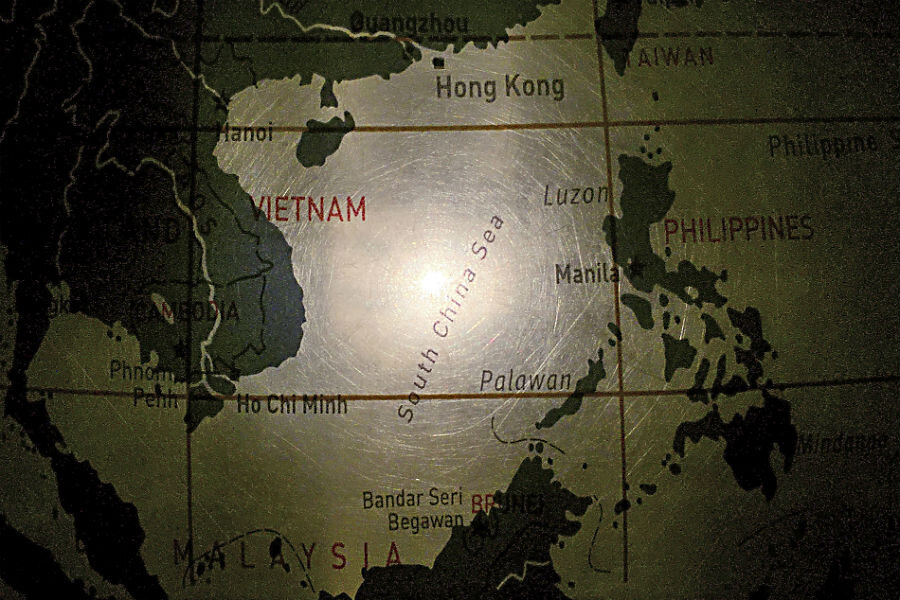Japan's fighter jets 'light up' Chinese jets patrolling East China Sea
Loading...
| Beijing
China strongly criticized Japan over a scramble of military aircraft from the two countries on Monday amid a dispute over islands in the East China Sea.
Two Japanese fighter jets took "provocative actions" at a high speed near a pair of Chinese fighter jets that were carrying out patrols in the East China Sea on June 17, China's defense ministry said in a microblog statement on Monday, without specifying where exactly the incident took place.
The Japanese planes used fire-control radar to "light up" the Chinese aircraft, the statement added.
Japan's senior military officer has acknowledged there was a scramble but has denied that any radar lock by the Chinese jet occurred or that the incident turned dangerous.
"The Japanese plane's provocative actions caused an accident in the air, endangering the safety of personnel on both sides, and destroying the peace and stability in the region," China's Defence Ministry said, adding the Chinese aircraft "responded resolutely."
China called on Japan to cease all provocative action, the statement added.
The statement about the incident comes after Japan's top military commander accused China of escalating military activity in the East China Sea, saying Japanese emergency scrambles to counter Chinese jets almost doubled over the past three months.
Japan is embroiled in a dispute with China in the East China Sea over ownership of a group of islands which lie about 220 km (140 miles) northeast of Taiwan, known as the Senkakus in Tokyo and the Diaoyu islands in Beijing.
Japan is worried that China is escalating its activity in the East China Sea in response to Tokyo's pledge to support countries in Southeast Asia, including the Philippines and Vietnam, that opposeChina's territorial claims in the South China Sea.
Meanwhile, China announced that it will hold military drills around the disputed Paracel Islands in the South China Sea, the maritime safety administration said on Sunday, ahead of a decision by an international court in a dispute between China and the Philippines.
China routinely carries out exercises in the South China Sea, where its territorial claims overlap in parts with Vietnam, the Philippines, Malaysia, Brunei and Taiwan.
Tensions have been rising ahead of a July 12 ruling by an arbitration court hearing the dispute between China and the Philippines over the South China Sea in the Dutch city of The Hague.
As The Christian Science Monitor reports, the tribunal, invoked by the Hague-based Permanent Court of Arbitration, is expected to rule that the Philippines should control a series of shoals and land outcroppings claimed and largely administered by China. China argues that the tribunal has no jurisdiction in the matter.
Officially, the US doesn’t take a position on the competing sovereignty claims in the South China Sea, where Vietnam, Taiwan, Brunei, and Malaysia also contest their rights to territory, fishing, and oil extraction. But China’s push to build and administer artificial islands in those waters has angered officials in the Pentagon, creating potential for naval skirmishes to erupt.
In an email to the Monitor, Mark Valencia, an adjunct senior scholar at China’s National Institute for South China Sea Studies, echoed the idea that the dispute could turn into conflict. “The Philippines, with US backing, may try to enforce the ruling by upping its activities in the disputed areas,” he wrote, “and China may likely push back.”
In a brief online statement, China's maritime safety administration said the drills would take place from July 5-11, and gave coordinates for the drills that cover an area from the east of China's Hainan island down to and including the Paracels.
Other ships are prohibited from entering those waters during that time, it said, without further elaboration.
The Paracels are also claimed by Vietnam and Taiwan.
China has built a runway on Woody Island, the site of the largest Chinese presence on the Paracels, and placed surface-to-air missiles there, according to U.S. officials.
China says it is perfectly within its rights to do what it wants on the islands in the South ChinaSea, saying they have been Chinese territory since ancient times.
About $5 trillion in ship-borne trade passes every year though the energy-rich, strategic waters of the South China Sea.
(Additional reporting by Tim Kelly in TOKYO; Editing by Nick Macfie)







